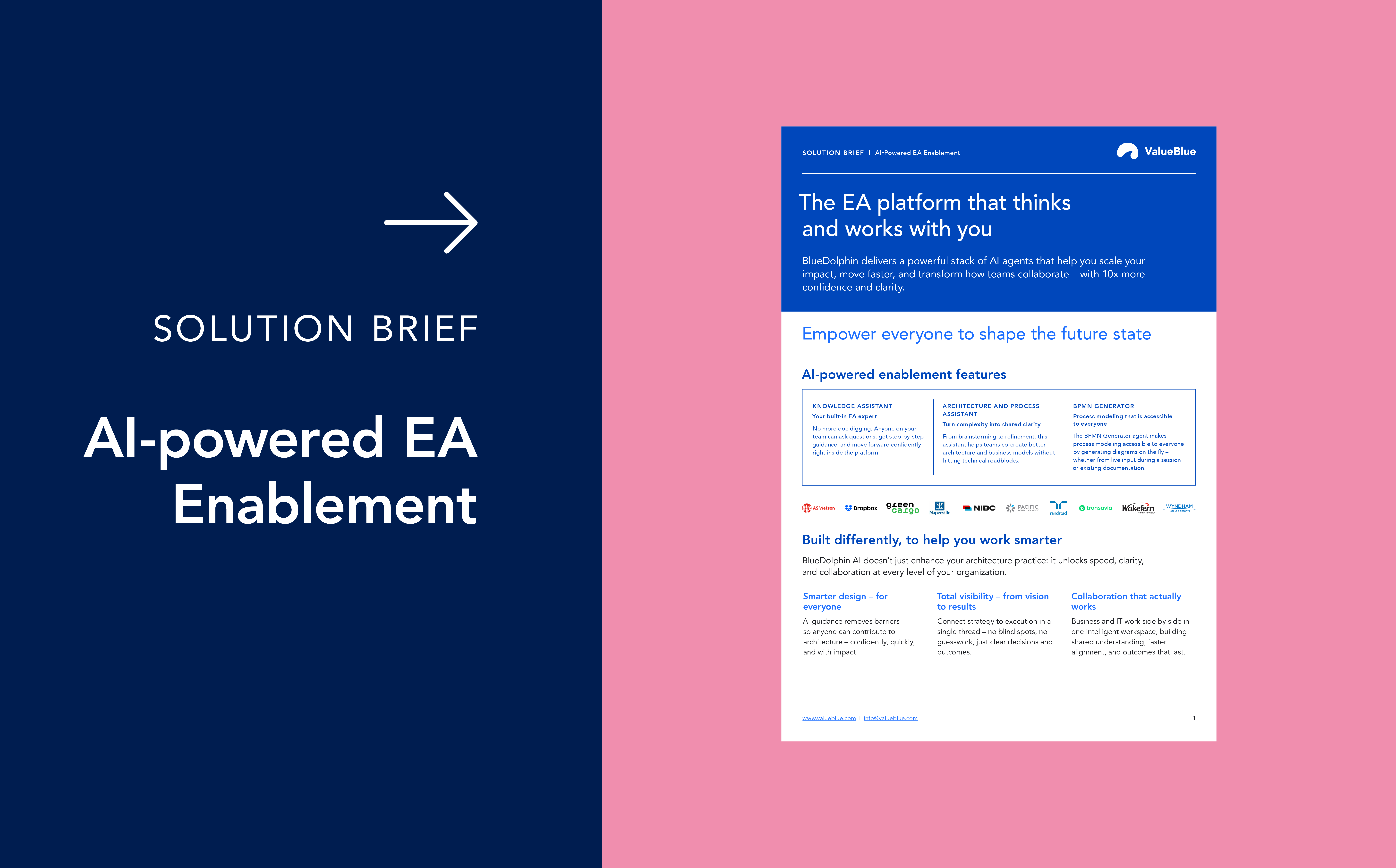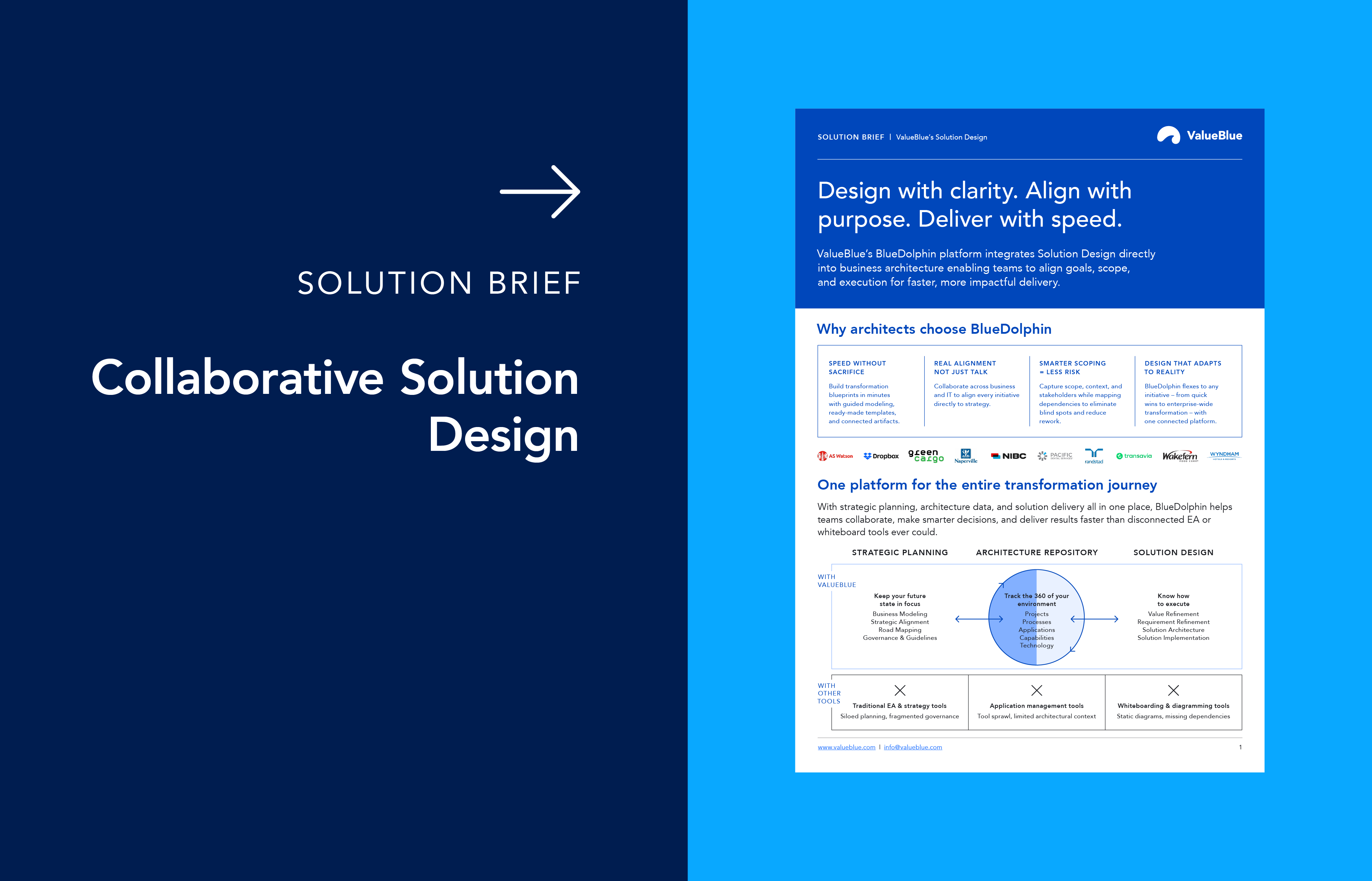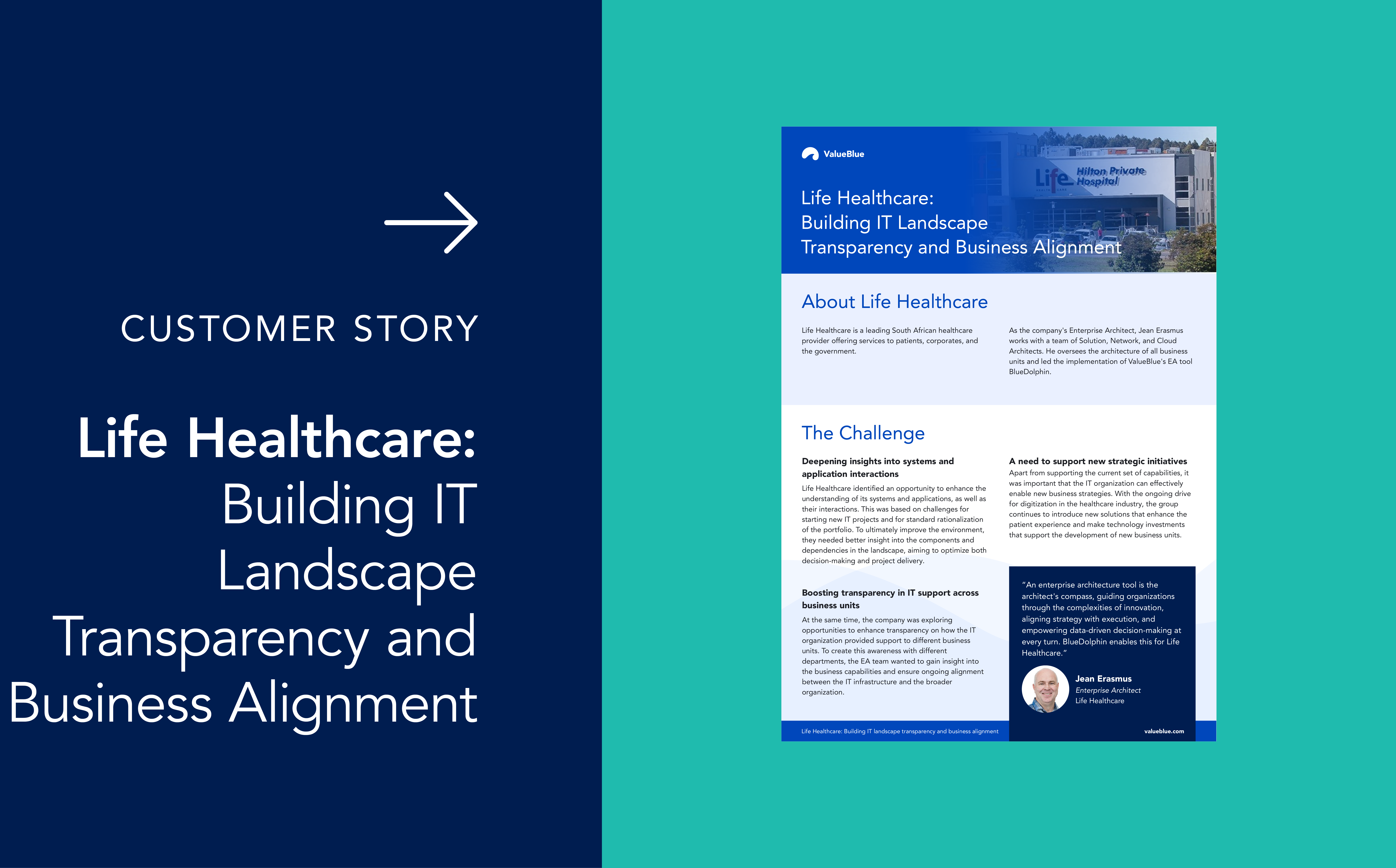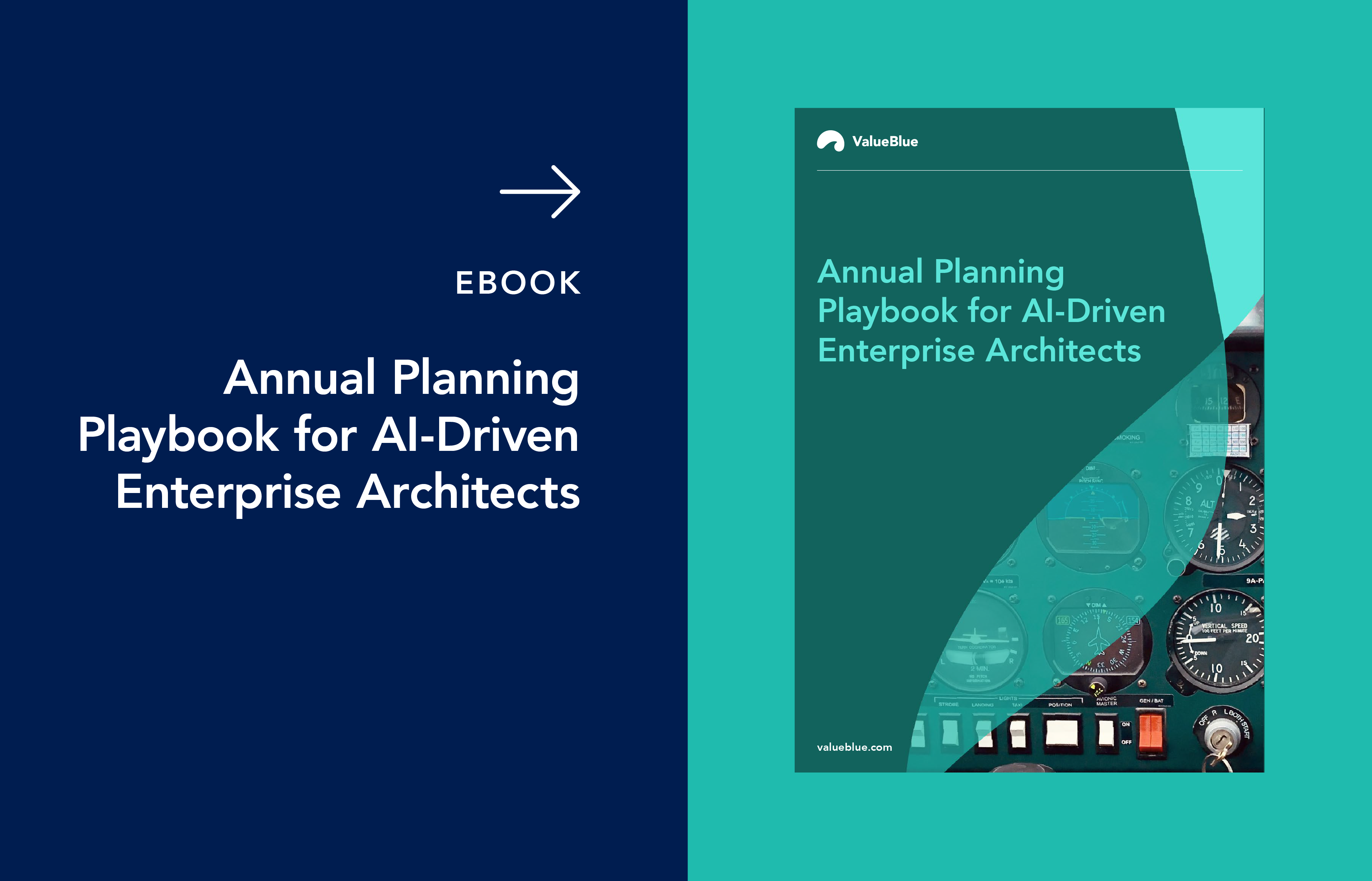Tell Me You're an Enterprise Architect Without Saying It
Enterprise architects face a unique challenge: explaining complex concepts to colleagues who don't share their specialized vocabulary or perspective. Yet, these conversations are essential for creating true alignment between technology and business goals.
According to research, communication is consistently identified as one of the top five challenges enterprise architects face, directly affecting their ability to obtain stakeholder buy-in.

In this article, we explore four fundamental Enterprise Architecture (EA) concepts and offer practical approaches to help your colleagues connect with these ideas. By framing EA concepts through everyday work experiences, you can build a shared understanding that bridges the gap between architecture theory and business practice.
Value Streams: What they are
Value streams map how workflows through your organization deliver customer value. They trace the sequence of activities required to create and provide a product or service that customers are willing to pay for. While most employees understand their immediate responsibilities, they rarely see how their work fits into the customer journey.

Enterprise architects analyze value streams to identify bottlenecks, redundancies, and improvement opportunities. When you understand the entire flow of value creation, you can pinpoint where technology investments will have the most significant impact.
Questions that help colleagues connect
Instead of diving into formal value stream mapping notation, try asking these questions:
- What parts of your work directly contribute to what customers pay for?
- Who relies on your output to complete their work?
- If your process stopped, how would it affect customer satisfaction?
- How has your part of the value stream changed over the past year?
These questions help team members see their role within the larger flow of value creation, not just as isolated tasks. When people recognize their place in a value stream, they naturally start identifying bottlenecks and opportunities for improvement.
Business Capabilities: What they are
Business capabilities describe what your organization does – the fundamental business functions regardless of their performance. They represent stable business functions that typically change much more slowly than the processes, applications, or technologies that implement them.

Think of capabilities as building blocks that collectively define what your organization can do. Examples include customer acquisition, product development, or supply chain management. Each capability combines people, processes, information, and tools to achieve a specific outcome.
Questions that help colleagues connect
These questions help people recognize how their work contributes to essential organizational capabilities:
- What core business function would fail if your role disappeared tomorrow?
- Which skills in your department would be hardest to replace?
- What unique ability does your team provide that no other team can?
- How has the way you deliver results changed, even though the fundamental function remains the same?
These questions help colleagues distinguish between the stable "what" (capabilities) and the changing "how" (processes and tools). This perspective helps them see why certain changes are disruptive while others are merely evolutionary.
Application Rationalization: What it is
Application rationalization involves identifying and eliminating redundant or outdated applications to reduce complexity and costs. Most organizations accumulate application sprawl over time, resulting in duplicate functionalities, increased maintenance costs, security vulnerabilities, and integration challenges.

The goal isn't simply cost-cutting. It's about creating a more coherent, manageable application landscape that better supports business needs. This often includes consolidating applications, replacing outdated systems, and sometimes retaining legacy applications when they still provide unique value.
Questions that help colleagues connect
These questions help colleagues recognize the hidden costs of application sprawl in their daily work:
- How many different systems do you use to accomplish similar tasks?
- Which applications cause the most frustration in your daily work?
- If you could combine two systems into one, which would they be?
- What percentage of features in your main applications do you actually use?
- How much time do you spend moving data between different systems?
When team members answer these questions, they begin to see application rationalization not as an IT cost-cutting exercise but as a way to simplify their work environment and eliminate daily frustrations.
Unlock the power of Enterprise Architecture
and drive real business impact!
Download our free eBook and learn:
- Why traditional, centralized EA falls short – and the risks of staying the course.
- How democratized EA empowers agile teams and operational leaders to shape solutions and drive change.
- The role of AI in simplifying EA tools, automating compliance, and making best practices accessible to all.
- Practical steps to build a collaborative, AI-powered EA ecosystem – from basic repositories to real-world pilots.
- How to measure success and ensure continuous improvement with clear KPIs.
Business Process Model and Notation (BPMN): What it is
BPMN provides a standard visual language for modeling business processes that everyone can understand. It uses a set of standardized symbols to represent activities, decisions, flows, and events within a process.

The challenge with BPMN isn't the notation itself but helping people see the value of formal process documentation. Many colleagues view process mapping as unnecessary bureaucracy rather than a tool for clarity and improvement.
Questions that help colleagues connect
These questions help people recognize that BPMN isn't about bureaucracy but about creating clarity, consistency, and improvement opportunities:
- Where does work often get stuck waiting for approvals or handoffs?
- What decisions do you make repeatedly that could be documented as standard rules?
- How do new team members currently learn your processes?
- When things go wrong in your process, what's the most common reason?
- Which parts of your process would be hardest to explain to someone new?
These questions help colleagues understand that process modeling addresses problems they experience regularly. Notation becomes valuable when it solves real issues they face.
Building a shared language
The most successful enterprise architects translate their frameworks into language that resonates with how people already think about their work. You don't need colleagues to learn EA terminology – you need them to see how EA concepts can help them solve their everyday challenges.

When explaining these concepts:
1. Start with problems, not solutions. Begin by identifying the challenges your colleagues already recognize before introducing architectural concepts.
2. Use concrete examples from their domain. Abstract concepts become clear when illustrated with examples from work people already understand.
3. Connect architecture to outcomes that matter. Show how better architecture leads to outcomes people care about – like fewer interruptions, less rework, or more time for creative tasks.
4. Make it visual whenever possible. Simple diagrams that show relationships between concepts often communicate more effectively than technical explanations. A value stream map or capability heat map can help stakeholders visualize complex relationships in ways written explanations cannot.
From theory to practice
Enterprise Architecture (EA) doesn't need to remain a mysterious discipline understood only by specialists. Connecting EA concepts to daily work experiences, you help colleagues see the value without requiring them to learn architectural terminology first.

The key is starting with what people already know and care about – their responsibilities, challenges, and goals – and then gradually revealing how enterprise architecture provides a framework that makes their work more effective and meaningful.
Ready to bridge the communication gap between EA theory and business practice? Try using these questions in your next conversation with a business stakeholder. Then, visualize the results in a simple diagram showing how their work connects to the larger organizational context. This approach can transform abstract architectural concepts into practical insights that drive real business value.





